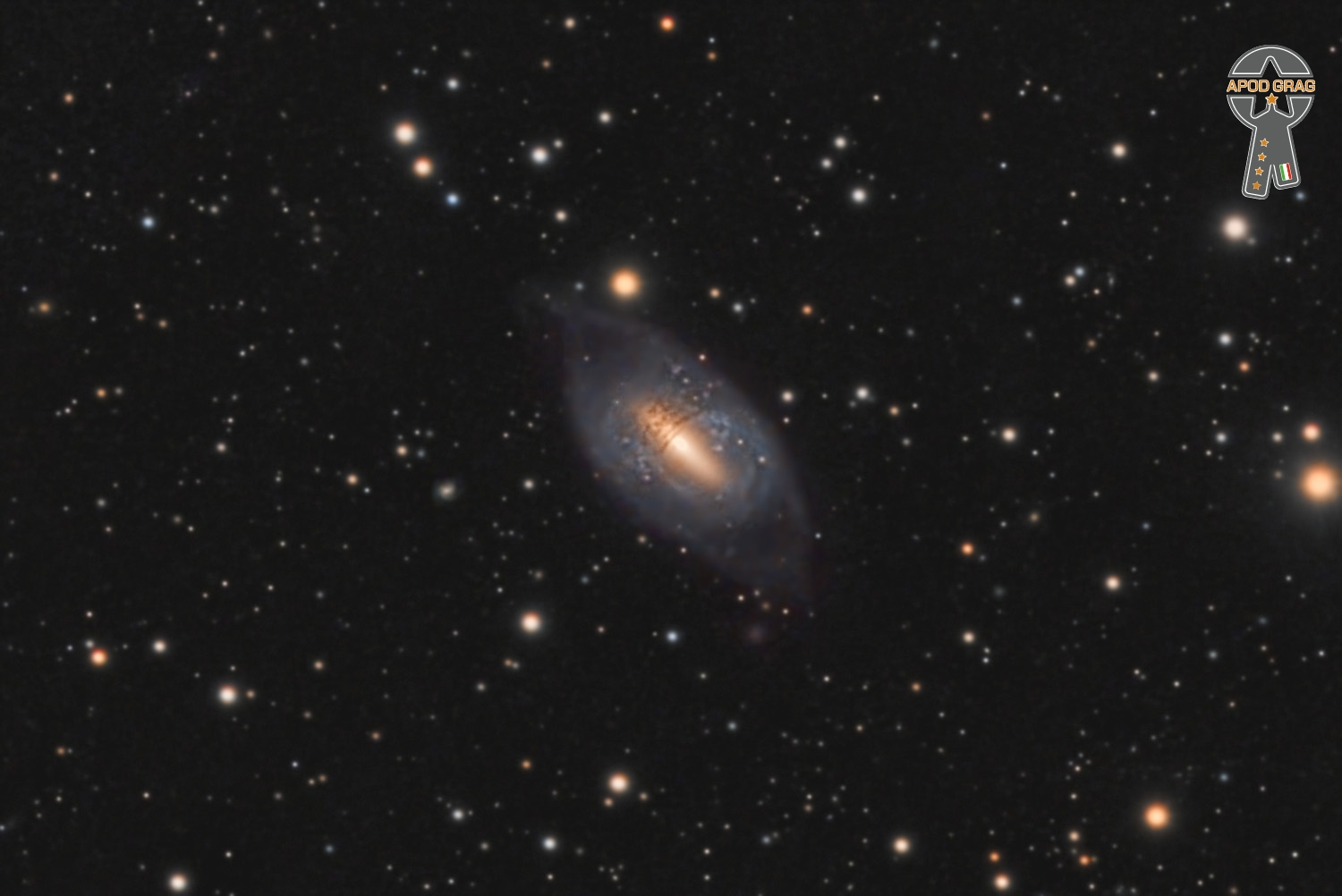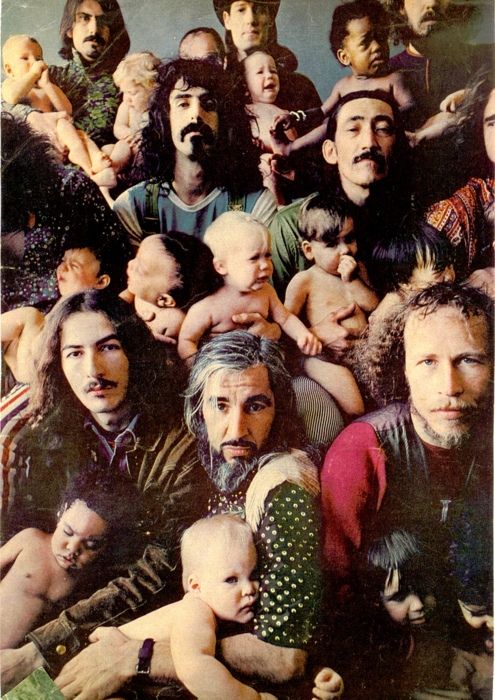Blog
Márkos Vamvakáris (Greek: Μάρκος Βαμβακάρης; 10 May 1905 – 8 February 1972), was a rebetiko musician. He is universally referred to by rebetiko writers and fans simply by his first name, Márkos. The great significance of Vamvakaris for the rebetiko is also reflected by his nickname: the “patriarch of the rebetiko”.
Vamvakaris was born on 10 May 1905 in Ano Syros (or Ano Khora), Syros, Greece. He was the first of six children, while his family belonged to the sizeable Roman Catholic community of the island, the “Francosyrians”, a name deriving from the colloquial Greek reference to West Europeans collectively as “the Franks“.
At the age of twelve, in the false belief that he was wanted by the police, Vamvakaris fled Syros for the port of Piraeus. He worked as a stevedore, a pit-coal miner, a shoe-polisher, a paperboy, a butcher, and other odd jobs. He heard a bouzouki player playing, and vowed that if he did not learn to play the instrument in six months he would chop off his own hand with a cleaver (he was working in the public abattoirs at the time). He learned bouzouki, becoming an innovative virtuoso player, and began to write songs of his own. At first he often played in clandestine hashish-smoking establishments known as tekés; later he and his band, which included Giorgos Batis, Anestis Delias and Stratos Pagioumtzis played in more legitimate clubs and taverns. They were extremely popular, and Markos made many recordings. His initial nickname among the rebetes was “the Frank” (Fragos).
more...https://www.youtube.com/watch?v=UiEGVYOruLk
more...This image from the NASA/ESA Hubble Space Telescope shows the tattered remnant of a supernova — a titanic explosion marking the end of the life of a dying star. This object — known as DEM L249 — is thought to have been created by a Type 1a supernova during the death throes of a white dwarf. While white dwarfs are usually stable, they can slowly accrue matter if they are part of a binary star system. This accretion of matter continues until the white dwarf reaches a critical mass and undergoes a catastrophic supernova explosion, ejecting a vast amount of material into space in the process. DEM L249 lies in the constellation Mensa and is within the Large Magellanic Cloud (LMC), a small satellite galaxy of the Milky Way only 160 000 light-years from Earth. The LMC is an ideal natural laboratory where astronomers can study the births, lives, and deaths of stars, as this region is nearby, oriented towards Earth, and contains relatively little light-absorbing interstellar dust. The data in this image were gathered by Hubble’s Wide Field Camera 3 instrument, and were obtained during a systematic search of the LMC for the surviving companions of white dwarf stars which have gone supernova.

Aaron Corthen, better known as A.C. Reed (May 9, 1926 – February 24, 2004) was an American blues saxophonist, closely associated with the Chicago blues scene from the 1940s into the 2000s.
Reed was born in Wardell, Missouri, and grew up in southern Illinois. He took his stage name from his friend Jimmy Reed. He moved to Chicago during World War II, playing with Earl Hooker and Willie Mabon in the 1940s. He toured with Dennis “Long Man” Binder in 1956, and worked extensively as a sideman for Mel London‘s blues record labels Chief/Profile/Age in the 1960s, with Lillian Offitt and Ricky Allen, among others. He had a regionally popular single in 1961, “This Little Voice” (Age 29101), and cut several more singles over the course of the decade with Age, USA, Cool, and Nike Records.
He became a member of Buddy Guy‘s band in 1967, playing with him on his tour of Africa in 1969 and, with Junior Wells, opening for the Rolling Stones in 1970. He remained with Guy until 1977. He then played with Son Seals and Albert Collins in the late 1970s and 1980s. He began recording solo material for Alligator Records in the 1980s. His 1987 album, I’m in the Wrong Business, includes cameo appearances by Stevie Ray Vaughan and Bonnie Raitt.
more...
Dennis Milton Chambers (born May 9, 1959) is an American drummer. He was inducted into the Modern Drummer Hall of Fame in 2001.
Chambers was born on May 9, 1959. He began drumming at the age of four years, and was gigging in Baltimore-area nightclubs by the age of six. He was recruited in 1981 by the Sugar Hill Label to be their “house drummer.” Chambers played on many Sugar Hill releases[citation needed]. Contrary to popular belief he did not play on “Rapper’s Delight” which was revealed in a recent interview with Drumeo on 8/16/2017.
In an interview by Bonedo in 2011, Chambers was asked who some of his influences and favorite drummers were and he mentioned Clyde Stubblefield, Al Jackson Jr., Steve Gadd, Vinnie Colaiuta, Gary Husband, Jack Dejohnette, Billy Cobham, Buddy Rich, Elvin Jones, Roy Haynes, and Tony Williams. In 1978 (at 18 years old) he joined Parliament/Funkadelic, and stayed with them until 1985. In 1986 he joined the John Scofield band. Since then he has played with most of the major figures in jazz fusion music.
He has recorded and performed with Tom Coster, John Scofield, George Duke, Victor Wooten, Brecker Brothers, Santana, Parliament/Funkadelic, John McLaughlin, Niacin, Mike Stern, CAB, Greg Howe, and many others. He has toured extensively with Carlos Santana and makes appearances with his band Niacin.
more...Nole Floyd “Nokie” Edwards (May 9, 1935 – March 12, 2018) was an American musician and member of the Rock and Roll Hall of Fame. He was primarily a guitarist, best known for his work with The Ventures, and was known in Japan as the ‘King of Guitars’. Edwards was also an actor, who appeared briefly on Deadwood, an American Western drama television series.
Edwards was born in Lahoma, Oklahoma, the son of Elbert Edwards and Nannie Mae Quinton Edwards, an original enrollee of the Western Cherokee. Edwards came from a family of accomplished musicians, so that by age five he began playing a variety of string instruments, including the steel guitar, banjo, mandolin, violin, and bass. His family relocated from Oklahoma to Puyallup, Washington.
During Edwards’ late teen years he joined the United States Army Reserve. After traveling to Texas and California for training, he returned home and began playing regularly for pay in numerous country bands in the area.
more...NGC 1512‘s center is a nuclear ring, a ring that surrounds the galaxy center and glows brightly with recently formed stars. Most stars and accompanying gas and dust, however, orbit the galactic center in a ring much further out — here seen near the image edge. This ring is called, counter-intuitively, the inner ring. If you look closely, you will see this the inner ring connects ends of a diffuse central bar that runs horizontally across the galaxy. These ring structures are thought to be caused by NGC 1512‘s own asymmetries in a drawn-out process called secular evolution. The gravity of these galaxy asymmetries, including the bar of stars, cause gas and dust to fall from the inner ring to the nuclear ring, enhancing this ring’s rate of star formation. Some spiral galaxies also have a third ring — an outer ring that circles the galaxy even further out.

Mahmoud Ahmed (Amharic: ማሕሙድ አህመድ; born 8 May 1941) is an Ethiopian singer. He gained great popularity in Ethiopia in the 1970s and among the Ethiopian diaspora in the 1980s, before rising to international fame with African music fans in Europe and the Americas.
Born in Addis Ababa, Mercato district, Mahmoud was enthralled with the music he heard on Ethiopian radio from an early age. Having poorly learned in school, he worked as a shoeshiner before becoming a handyman at the Arizona Club, which was the after hours hangout of Emperor Haile Selassie I‘s Imperial Bodyguard Band. One night in 1962 when the band’s singer didn’t show up, Mahmoud asked to sing a few songs. He soon became part of the band’s regular lineup, where he remained until 1974.
more...Keith Jarrett (born May 8, 1945) is an American jazz and classical music pianist and composer. Jarrett started his career with Art Blakey, moving on to play with Charles Lloyd and Miles Davis. Since the early 1970s he has also been a group leader and a solo performer in jazz, jazz fusion, and classical music. His improvisations draw from the traditions of jazz and other genres, especially Western classical music, gospel, blues, and ethnic folk music.
In 2003, Jarrett received the Polar Music Prize, the first recipient of both the contemporary and classical musician prizes, and in 2004 he received the Léonie Sonning Music Prize. His album, The Köln Concert, released in 1975, became the best-selling piano recording in history. In 2008, he was inducted into the Down Beat Jazz Hall of Fame in the magazine’s 73rd Annual Readers’ Poll.
Jarrett has been unable to perform since suffering a stroke in February 2018. A second stroke, in May 2018, left him partially paralyzed and unable to play with his left hand. Keith Jarrett was born on May 8, 1945, in Allentown, Pennsylvania. to a mother of Slovenian descent. Jarrett’s grandmother was born in Segovci, near Apače in Slovenia. Jarrett’s father was of mostly German descent. He grew up in suburban Allentown with significant early exposure to music.
more...Mary Lou Williams (born Mary Elfrieda Scruggs; May 8, 1910 – May 28, 1981) was an American jazz pianist, arranger, and composer. She wrote hundreds of compositions and arrangements and recorded more than one hundred records (in 78, 45, and LP versions). Williams wrote and arranged for Duke Ellington and Benny Goodman, and she was friend, mentor, and teacher to Thelonious Monk, Charlie Parker, Miles Davis, Tadd Dameron, Bud Powell, and Dizzy Gillespie.
The second of eleven children, Williams was born in Atlanta, Georgia, and grew up in the East Liberty neighborhood of Pittsburgh, Pennsylvania. A musical prodigy, at the age of three, she taught herself to play the piano. Mary Lou Williams played piano out of necessity at a very young age; her white neighbors were throwing bricks into her house until Williams began playing the piano in their homes. At the age of six, she supported her ten half-brothers and sisters by playing at parties. She began performing publicly at the age of seven when she became known admiringly in Pittsburgh as “The Little Piano Girl”. She became a professional musician at the age of 15, citing Lovie Austin as her greatest influence. She married jazz saxophonist John Williams in November 1926.
more...
Robert Leroy Johnson (May 8, 1911 – August 16, 1938 Hazlehurst, MS) was an American blues musician and songwriter. His landmark recordings in 1936 and 1937 display a combination of singing, guitar skills, and songwriting talent that has influenced later generations of musicians. He is now recognized as a master of the blues, particularly the Delta blues style.
As a traveling performer who played mostly on street corners, in juke joints, and at Saturday night dances, Johnson had little commercial success or public recognition in his lifetime. He participated in only two recording sessions, one in San Antonio in 1936, and one in Dallas in 1937, that produced 29 distinct songs (with 13 surviving alternate takes) recorded by famed Country Music Hall of Fame producer Don Law. These songs, recorded at low fidelity in improvised studios, were the totality of his recorded output. Most were released as 10-inch, 78 rpm singles from 1937–1938, with a few released after his death. Other than these recordings, very little was known of him during his life outside of the small musical circuit in the Mississippi Delta where he spent most of his life; much of his story has been reconstructed after his death by researchers. Johnson’s poorly documented life and death have given rise to much legend. The one most closely associated with his life is that he sold his soul to the devil at a local crossroads to achieve musical success.
His music had a small, but influential, following during his life and in the two decades after his death. In late 1938 John Hammond sought him out for a concert at Carnegie Hall, From Spirituals to Swing, only to discover that Johnson had died. Brunswick Records, which owned the original recordings, was bought by Columbia Records, where Hammond was employed. Musicologist Alan Lomax went to Mississippi in 1941 to record Johnson, also not knowing of his death. Law, who by then worked for Columbia Records, assembled a collection of Johnson’s recordings titled King of the Delta Blues Singers that was released by Columbia in 1961. It is widely credited with finally bringing Johnson’s work to a wider audience. The album would become influential, especially on the nascent British blues movement; Eric Clapton has called Johnson “the most important blues singer that ever lived.” Musicians such as Bob Dylan, Keith Richards, and Robert Plant have cited both Johnson’s lyrics and musicianship as key influences on their own work. Many of Johnson’s songs have been covered over the years, becoming hits for other artists, and his guitar licks and lyrics have been borrowed by many later musicians.
Renewed interest in Johnson’s work and life led to a burst of scholarship starting in the 1960s. Much of what is known about him was reconstructed by researchers such as Gayle Dean Wardlow and Bruce Conforth, especially in their 2019 award-winning biography of Johnson: Up Jumped the Devil: The Real Life of Robert Johnson (Chicago Review Press). Two films, the 1991 documentary The Search for Robert Johnson by John Hammond Jr., and a 1997 documentary, Can’t You Hear the Wind Howl, the Life and Music of Robert Johnson, which included reconstructed scenes with Keb’ Mo’ as Johnson, were attempts to document his life, and demonstrated the difficulties arising from the scant historical record and conflicting oral accounts. Over the years, the significance of Johnson and his music has been recognized by numerous organizations and publications, including the Rock and Roll, Grammy, and Blues Halls of Fame; and the National Recording Preservation Board. Johnson died on August 16, 1938, at the age of 27, near Greenwood, Mississippi, of unknown causes. His death was not reported publicly; he merely disappeared from the historical record and it was not until almost 30 years later, when Gayle Dean Wardlow, a Mississippi-based musicologist researching Johnson’s life, found his death certificate, which listed only the date and location, with no official cause of death. No formal autopsy was done; instead, a pro forma examination was done to file the death certificate, and no immediate cause of death was determined. It is likely he had congenital syphilis and it was suspected later by medical professionals that this may have been a contributing factor in his death. However, 30 years of local oral tradition had, like the rest of his life story, built a legend which has filled in gaps in the scant historical record.
more...NGC 2685 is a very unusual galaxy in the constellation Ursa Major.
It is a rare polar ring galaxy – meaning it has a ring of gas, stars and dust orbiting in a plane almost perpendicular to the normal flat plane of NGC 2685. Physically it contains two separate velocity systems whose axes are perpendicular. The most popular view says that such galaxies are the result of an interaction, up to and including a complete merger, with another galaxy.
This feature can be seen in the image as helical filaments around the central part of the galaxy.
NGC 2685 is about 50,000 light years across, and about 42 million light years from Earth.
Image captured on my remote dual rig at Fregenal de la Sierra in Spain between 26 March and 7 April 2022.

Jimmy Lee Ruffin (May 7, 1936 – November 17, 2014) was an American soul singer, and elder brother of David Ruffin of the Temptations. He had several hit records between the 1960s and 1980s, the most successful being the Top 10 hits “What Becomes of the Brokenhearted” and “Hold On (To My Love)“. Jimmy Ruffin was born in 1936 in Collinsville, Mississippi, to Eli, a sharecropper, and Ophelia Ruffin. He was approaching his fifth birthday when his younger brother David was born. As children, the brothers began singing with a gospel group, the Dixie Nightingales.
In 1961, Jimmy became a singer as part of the Motown stable, mostly on sessions but also recording singles for its subsidiary Miracle label, but was then drafted for national service. After leaving the Army in 1964, he returned to Motown, where he was offered the opportunity to join the Temptations to replace Elbridge Bryant. However, after hearing his brother David, they hired him for the job instead so Jimmy decided to resume his solo career. Ruffin recorded for Motown’s subsidiary Soul label, but with little success.
more...More Posts
- Avery Parrish Day
- Oliver “Tuku” Mtukudzi Day
- Daily Roots with the Soul Rhythms
- Echos of Freedom by Lincoln
- The Cosmos with the Moon Meteorite Strike
- Gary Burton Day
- Curtis Counce Day
- Django Reinhardt Day
- World Music with Hussein Rassim
- Daily Roots with Ken Lazarus
- Echos of Freedom with John Hollow Horn
- The Cosmos with NGC 5879
- Eberhard Weber Day
- Sam Cooke Day
- J. J. Johnson Day
- World Music with Jabali Afrika
- Daily Roots with Derrick Morgan
- Echos of Freedom by Dr Martin Luther King Jr
- The Cosmos with IC 4605
- Richie Havens Day

